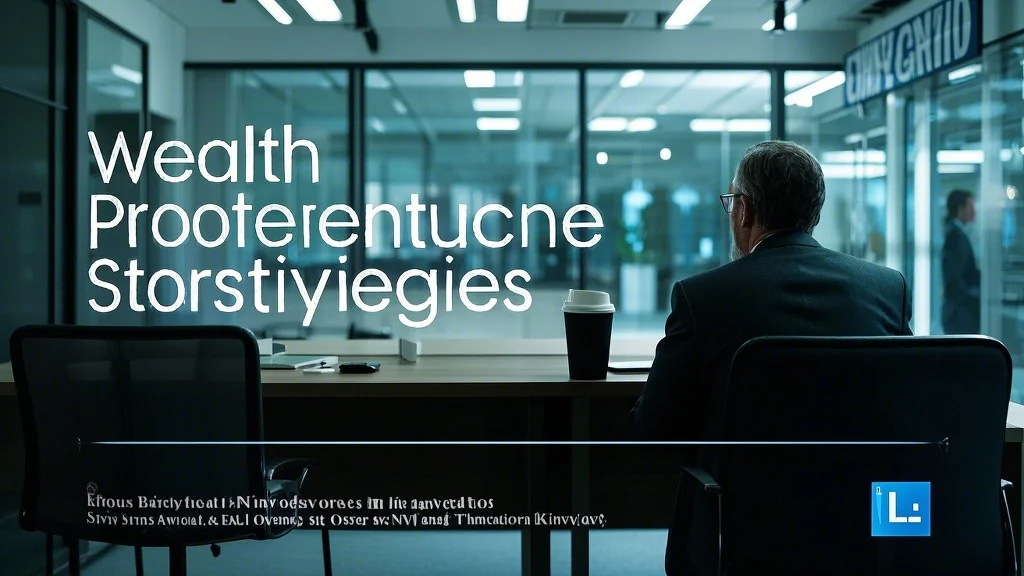Essential Wealth Protection Strategies for Modern Investors
In today’s increasingly complex financial landscape, implementing robust wealth protection strategies has become just as critical as wealth creation. The most effective approaches create multiple layers of defense, beginning with proper legal structures to shield assets from potential creditors and lawsuits. Sophisticated investors utilize a combination of trusts, limited liability entities, and strategic titling to compartmentalize different asset types. Insurance forms another crucial layer, extending beyond basic policies to include umbrella coverage, professional liability protection, and even specialized policies for unique risks like cyber threats or reputational damage. What separates comprehensive protection strategies from piecemeal solutions is their proactive nature – they’re designed to prevent problems before they arise rather than simply reacting to crises after the fact.
One often-overlooked aspect of wealth protection strategies involves digital asset security. As more wealth exists in digital form – from cryptocurrency holdings to online investment accounts – traditional protection methods need augmentation with advanced cybersecurity measures. This includes multi-factor authentication, cold storage solutions for digital assets, and comprehensive identity theft monitoring. Another critical consideration is international diversification of assets for those with global exposure, ensuring that no single jurisdiction’s political or economic turmoil can jeopardize an entire fortune. The most thorough protection plans include regular “stress tests” to identify potential vulnerabilities before they can be exploited, much like financial institutions assess their risk exposure.
Comprehensive Wealth Management Services That Safeguard Your Assets
Top-tier wealth management services now integrate protection strategies into every aspect of financial planning. Beyond investment management, these services coordinate teams of legal specialists, insurance professionals, and risk management experts to create holistic defense systems for your wealth. For business owners, this might involve structuring corporate entities to isolate personal assets from business liabilities. For families with generational wealth, it typically includes dynasty trusts and other estate planning vehicles that protect assets while allowing continued family control. The most sophisticated firms also offer family governance services, helping establish protocols for decision-making that prevent conflicts which could jeopardize family assets.
Modern wealth management services also provide crucial monitoring functions that serve as early warning systems for potential threats. This might include regular reviews of insurance coverage to ensure it keeps pace with growing asset values, or audits of estate documents to confirm they remain current with changing laws. Another valuable service is liquidity planning – ensuring you maintain appropriate access to cash without being forced to sell protected assets under duress. For internationally mobile clients, some firms offer cross-border planning specialists who navigate the complex web of tax treaties and reporting requirements to prevent unintended exposure. These services transform wealth protection from a static set of documents into an ongoing, dynamic process that evolves with your changing circumstances.
Advanced Risk Management Techniques for Asset Preservation
Sophisticated risk management goes far beyond basic diversification to address the full spectrum of threats facing modern investors. The most comprehensive approaches begin with risk identification – systematically cataloging potential dangers ranging from market volatility to regulatory changes to personal liability exposures. Quantitative analysis then assesses both the probability of these risks materializing and their potential financial impact. What distinguishes elite risk management is its focus on correlation – understanding how different risks might compound during crisis scenarios to create outsized threats. This analysis informs the development of customized mitigation strategies that may include hedging instruments, insurance products, and legal structures tailored to your specific risk profile.
One of the most valuable developments in contemporary risk management is scenario planning – using sophisticated modeling to simulate how different crisis situations would affect your overall financial position. This might reveal, for example, that your protection strategies would hold up well in a typical recession but could falter during stagflation, prompting targeted adjustments. Another critical innovation is the use of “black swan” hedging techniques that provide inexpensive protection against extreme, low-probability events that could devastate unprotected portfolios. The most forward-thinking approaches also incorporate behavioral risk management – structures and processes that prevent emotional decision-making during periods of market stress when poor choices can do lasting damage to carefully constructed protection strategies.

The Critical Role of Estate Planning in Wealth Preservation
Proper estate planning serves as the cornerstone of any comprehensive wealth protection strategy, ensuring your assets transfer according to your wishes while minimizing tax erosion and family conflicts. The most effective plans utilize a combination of wills, trusts, and beneficiary designations tailored to your specific family dynamics and asset composition. For high-net-worth individuals, this often involves sophisticated techniques like grantor retained annuity trusts (GRATs), family limited partnerships, and charitable lead trusts that can transfer wealth while maintaining some control and reducing tax liabilities. What separates exceptional estate planning from basic will preparation is its integration with your overall financial strategy – how retirement accounts, life insurance, and business interests all coordinate within the plan.
Modern estate planning also addresses several often-overlooked but critical considerations. Digital asset planning ensures access to and proper disposition of online accounts and cryptocurrencies. Legacy planning incorporates non-financial assets like family histories, values, and philanthropic intentions. For blended families, special trust structures can balance competing interests between current spouses and children from previous relationships. The most robust plans also include incapacity planning – durable powers of attorney, healthcare directives, and living wills that protect you and your assets if you’re unable to make decisions. Regular reviews (at least biennially or after major life events) ensure these documents remain current as laws and personal circumstances evolve.
Innovative Asset Protection Strategies for the Modern Era
Cutting-edge asset protection strategies have evolved far beyond basic insurance policies to create robust legal and financial barriers against potential threats. For professionals facing malpractice risks, this might involve layered liability protection combining incorporation, insurance, and segregated assets. Real estate investors often benefit from series LLC structures that isolate properties from one another. High-net-worth families frequently utilize domestic asset protection trusts (DAPTs) in favorable jurisdictions, while internationally exposed individuals might employ foreign trusts for additional safeguards. What distinguishes the most effective strategies is their implementation before threats emerge – courts often scrutinize and may reverse protections established after liabilities arise.
One of the most significant developments in asset protection strategies is the recognition that different asset types require different protection methods. Liquid securities demand different approaches than real estate, business interests, or intellectual property. Another critical innovation is the integration of asset protection with tax planning – strategies that reduce vulnerability to creditors while also minimizing tax exposure. The most sophisticated plans also consider the interplay between state and federal laws, particularly for clients with assets or residences in multiple jurisdictions. Perhaps most importantly, top-tier asset protection maintains accessibility – ensuring you retain appropriate control and benefit from shielded assets while still providing legal protection against potential threats.
Integrating Protection Into Your Overall Financial Strategy
When you combine comprehensive wealth protection strategies with professional wealth management services, sophisticated risk management, thorough estate planning, and innovative asset protection strategies, you create a financial defense system greater than the sum of its parts. The synergy between these elements often reveals opportunities invisible when each is considered in isolation – how an irrevocable trust might serve both asset protection and estate tax goals, or how a family limited partnership could provide liability protection while facilitating generational wealth transfer.
The investors who achieve the most robust protection are those who view it as an ongoing process rather than a one-time event. They conduct regular reviews to ensure coverage keeps pace with growing asset values and changing laws. They educate family members about protection structures to prevent unintentional compromises. Perhaps most importantly, they balance protection with accessibility – creating barriers against threats while maintaining flexibility to adapt to opportunities. In an uncertain world filled with both financial opportunities and risks, this comprehensive approach to wealth protection provides the security needed to pursue growth with confidence.
